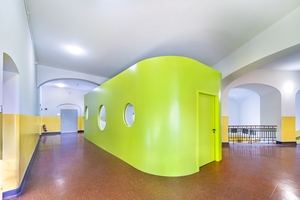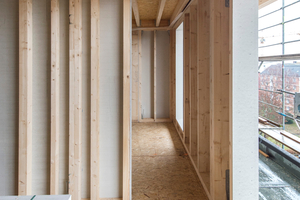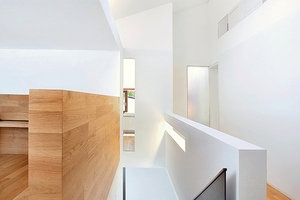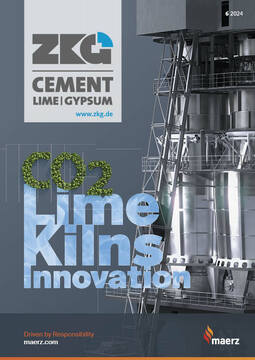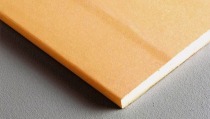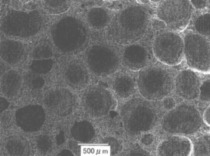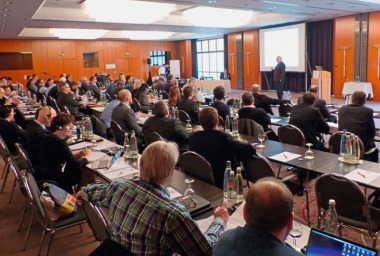No alternative: The advantages of plasterboard are unique and difficult to replace
The undisputed advantages of gypsum products for the extension of existing buildings and new builds are appreciated by countless building owners and specialist companies for many reasons. In addition to the positive building biology properties, the structural performance, e.g. in terms of sound insulation and fire protection, and the ease of processing are sound arguments for the use of gypsum products. What’s more, unlike most other building materials, gypsum is fully recyclable. Alternatives to gypsum boards for finishing are available. These building materials, some of which are traditional, can usefully supplement drywall construction in certain applications, but do not currently offer an equivalent substitute in terms of construction technology, economy or ecology. This has been confirmed by a scientific study conducted by TH Rosenheim and VHT Darmstadt.
All building material producers currently have to ask themselves how the supply of raw materials can be secured in the future. Over the last 30 to 40 years, the gypsum industry has conserved natural gypsum deposits and increasingly used high-purity FGD gypsum, which is produced during the cleaning of flue gases in coal-fired power plants, as a raw material. As the last coal-fired power plants are due to be taken off the grid in 2038, this important source of raw materials will no longer be available to the building materials industry. Currently, around 50% of the gypsum processed in the building materials industry comes from flue gas desulphurization plants (FGD gypsum). How the industry’s gypsum requirements can be covered in the future is currently unclear. “Since the recycling of gypsum products is still in its infancy and is limited in terms of quantity, gypsum mining will indirectly represent the main source of gypsum raw materials,” is how Prof Dr-Ing Jochen Pfau assesses the situation in a study by Rosenheim Technical University and VHT Darmstadt. This is bound to lead to conflicts with nature conservation associations, which reject the expansion of natural gypsum mining and are calling for alternatives in the construction sector.
But can gypsum-based building boards really be easily replaced by alternative board materials? In principle, the building biology and building physics properties of alternative systems – apart from a few product-specific restrictions – are comparable to those of gypsum. Despite this statement, Professor Pfau concludes in the above-mentioned study, which mainly focuses on wood-based panels and clay building boards: “...that the lightweight partition wall systems with the alternative cladding panels under consideration are not a sensible alternative to partition wall systems with cladding made of plasterboard in terms of the available resources and production capacities.”
Clay building boards
The widespread use of clay building systems is already being hampered by the quantities available. The current production volume is around one per thousand of plasterboard production. An increase to more than 1% within the next 10 years – that would be 10 times the amount – is considered unrealistic in the industry. However, widespread use is also limited due to the low number of usability certificates. “Alternative systems are simply years behind the gypsum industry in terms of usability certificates,” the scientist notes. According to German building law, however, the use of systems without relevant usability certificates is not permitted with regard to stability and fire and sound insulation requirements.
And don’t clay building boards also need raw materials? As the current products are on average heavier, thicker and also coated with clay plaster, around twice the volume of clay is needed to produce the same number of boards as plaster, according to Professor Pfau. Shifting the quantities of raw materials mined away from gypsum and towards clay would have the undesirable effect of increasing, rather than reducing, the impact on the natural landscape.
Clay building boards also require more complex processing. Optimized processes in drywall construction would have to be changed. While the dry construction method does not introduce any moisture into the building and subsequent trades can continue working immediately, the plaster application required for earth building systems leads to drying and waiting times and thus to significant delays in the construction process. The finished clay plaster surfaces are also more sensitive and have more restrictions with regard to possible final coatings. Last but not least, internal board and plaster reinforcements - even if they are organic in nature - require separation processes in earth building systems and therefore make recycling more difficult.
More material and more complex processing inevitably result in higher costs. Professor Pfau estimates the price difference for a new build with the usual amount of non-load-bearing drywall to be one to three percent higher. However: “For extensions and conversions in existing buildings, the percentage increase in costs is higher and can be up to 100%.”
Despite all the limitations, clay building boards are justified and will play an increasingly important role in certain market segments in the future. “How-ever,” says Pfau, “they should not be seen as an alternative to drywall systems with plasterboard, either in terms of construction technology or ecology.”
Wood-based panels
Many high-performance constructions feature combinations of wood-based panels and gypsum boards as cladding. These are proven and common solutions in timber construction. But is the complete substitution of plasterboard with wood-based panels really sensible? This raises the question of the most sensible use of resources. Although substitution is certainly feasible in terms of mechanical performance, the study also raises the question of proof of usability, construction costs and material properties such as flammability, emissions (formaldehyde) and moisture behavior. More important, however, is the question of resource efficiency: the required additional demand for wood-based panels from sustainable, local forest management cannot be met in the foreseeable future, either in terms of production capacity or the availability of raw materials. “If I only want to replace a fifth of the annual amount of plasterboard, then I would need around 1000 km² of forest to do so with sustainable forest management. Almost half the area of Saarland,” says Professor Pfau, explaining the quantities required. “As long as the available wood resources are limited, wood-based panels should be used as sparingly as possible, if possible in areas of application where their special properties are in demand, e.g. for load-bearing and bracing tasks in timber frame construction,” he demands.
Savings potential through optimization
Gypsum resources can be saved more easily and quickly than by using alternative panel materials in drywall construction by optimizing and streamlining the designs currently used in construction. “As is always the case in construction, unused savings potential in dry construction measures can be found in construction site logistics, construction management, construction planning, etc. A great deal can still be saved here in terms of materials,” says Professor Pfau. Despite all the justified discussions about resources in the construction sector, it should not be forgotten “that in lightweight and dry construction we are in an area that stands for resource conservation and sustainability anyway and that requires comparatively little material to complete a construction task.”
The complete scientific study “Study on the performance of gypsum-bound building boards in finishing, potential for substitution of these boards by alternative products (wood-based panels, clay building boards)” by Prof. Dr. Ing. Jochen Pfau (TH Rosenheim/VHT Darmstadt) can be downloaded at this link:
https://www.vht-darmstadt.de/forschen

